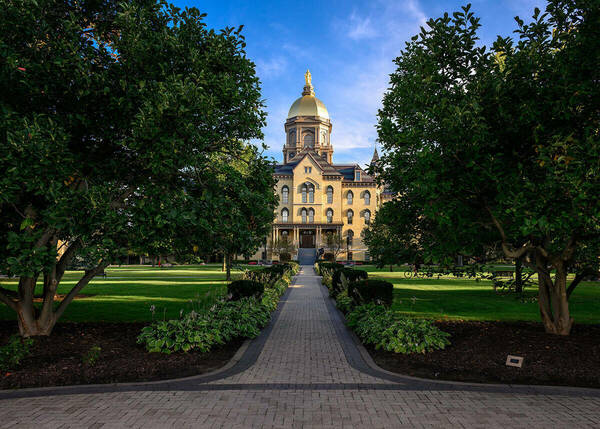Synchronized forces behind flower-like patterns in plasma waves
Neither a solid, liquid, nor gas, plasma doesn’t play by the same rules as the other states of matter. Its unique properties are particularly evident at plasma-liquid interfaces, where chemical, electric and fluid forces collide to create waves.
In a recent paper in Physical Review Letters, engineers at the University of Notre Dame identify a new class of plasma-liquid waves that could be harnessed for multiple applications, from more effective water remediation technologies to gentler cancer treatments.
You throw a rock in a pond and you see ripples move outward because you’ve deformed the surface,” said Paul Rumbach, associate teaching professor in aerospace and mechanical engineering at the University of Notre Dame and co-author on the paper. “At the plasma-liquid interface, electrostatic force deforms the liquid, creating waves and motion.”
To produce these waves, the team ran electrical current through a needle-shaped electrode suspended above a petri dish of saline solution.
“You’d expect that the electrical current would generate just a single spot of plasma, like a flashlight beam on the surface,” said Rumbach. “But, if you turn up the voltage, that single spot turns into a ring, and, as you turn up the power higher, that ring breaks up into a pattern of spots that look like the petals on a flower.”

These floral plasma patterns often spin in a circle—a motion caused by the electrical interaction between the plasma and liquid.
When a liquid is flat, the pressure on it is evenly distributed, however, when the surface curves, the pressure changes. These unusual plasma-liquid waves form when pressure exerted by the plasma (Maxwell pressure) interacts with a liquid surface that has been curved by electrohydrodynamic forces. Plasma and liquid motions fall into sync, thus amplifying each other’s effects.
Motion is an important byproduct of this process. Currently, the water contaminant PFAS (per- and polyfluoroalkyl substances) can be destroyed by plasma, only if it happens to be on the micrometers-thin, plasma-liquid boundary. The team’s plasma-generated waves could mix the contaminated water, directing toxins toward the surface to be irradiated and pushing the by-products away.
“Plasma is a gentler, more efficient form of radiation that can be used to destroy contaminants in water or treat cancer,” said Rumbach. “Understanding how it interacts with water is critical for developing these applications.”
In addition to Rumbach, postdoctoral scholars Oles Dubrovski and Jinyu Yang at the University of Notre Dame contributed to this research, which was supported by the National Science Foundation, the Army Research Office, and the Notre Dame (ND) and Pontificia Universidad Católica de Chile (UC Chile) Scholars Joint Research Award.
Latest Research
- University of Notre Dame and IBM Research build tools for AI governanceMain Building (Photo by Matt Cashore/University of Notre Dame) …
- Smarter tools for policymakers: Notre Dame researchers target urban carbon emissions, building by buildingCarbon emissions continue to increase at record levels, fueling climate instability and worsening air quality conditions for billions in cities worldwide. Yet despite global commitments to carbon neutrality, urban policymakers still struggle to implement effective mitigation strategies at the city scale. Now, researchers at Notre Dame’s School of Architecture, the College of Engineering and the Lucy Family Institute for Data & Society are working to reduce carbon emissions through advanced simulations and a novel artificial intelligence-driven tool, EcoSphere.
- Seven engineering faculty named collegiate professorsSeven faculty members in the Notre Dame College of Engineering have been named collegiate professors—a prestigious title awarded by the university and college in recognition of excellence in research, teaching and service. The designation may be conferred on faculty at the assistant, associate or…
- ‘A special challenge’: German studies scholar wins National Humanities Center fellowship for research on medieval womenFor CJ Jones, the joy of research is not the answers but the journey. And the next step on that journey is a fellowship with the National Humanities Center. …
- Notre Dame Lead Innovation Team partners with local WIC program to identify, prevent lead poisoning in childrenB.A.B.E. store “shoppers” now have something new to help their families: free lead screening kits offered by the University of Notre Dame’s Lead Innovation Team.
- Notre Dame Welcomes Ninth Cohort of Warrior-Scholars for Transformative Academic JourneyNOTRE DAME, IN – The University of Notre Dame recently concluded its ninth successful Warrior-Scholar Project (WSP) boot camp, hosting 34 dedicated Warrior-Scholars from June 21st to 28th. This intensive, week-long academic residency provided transitioning service members and veterans…













